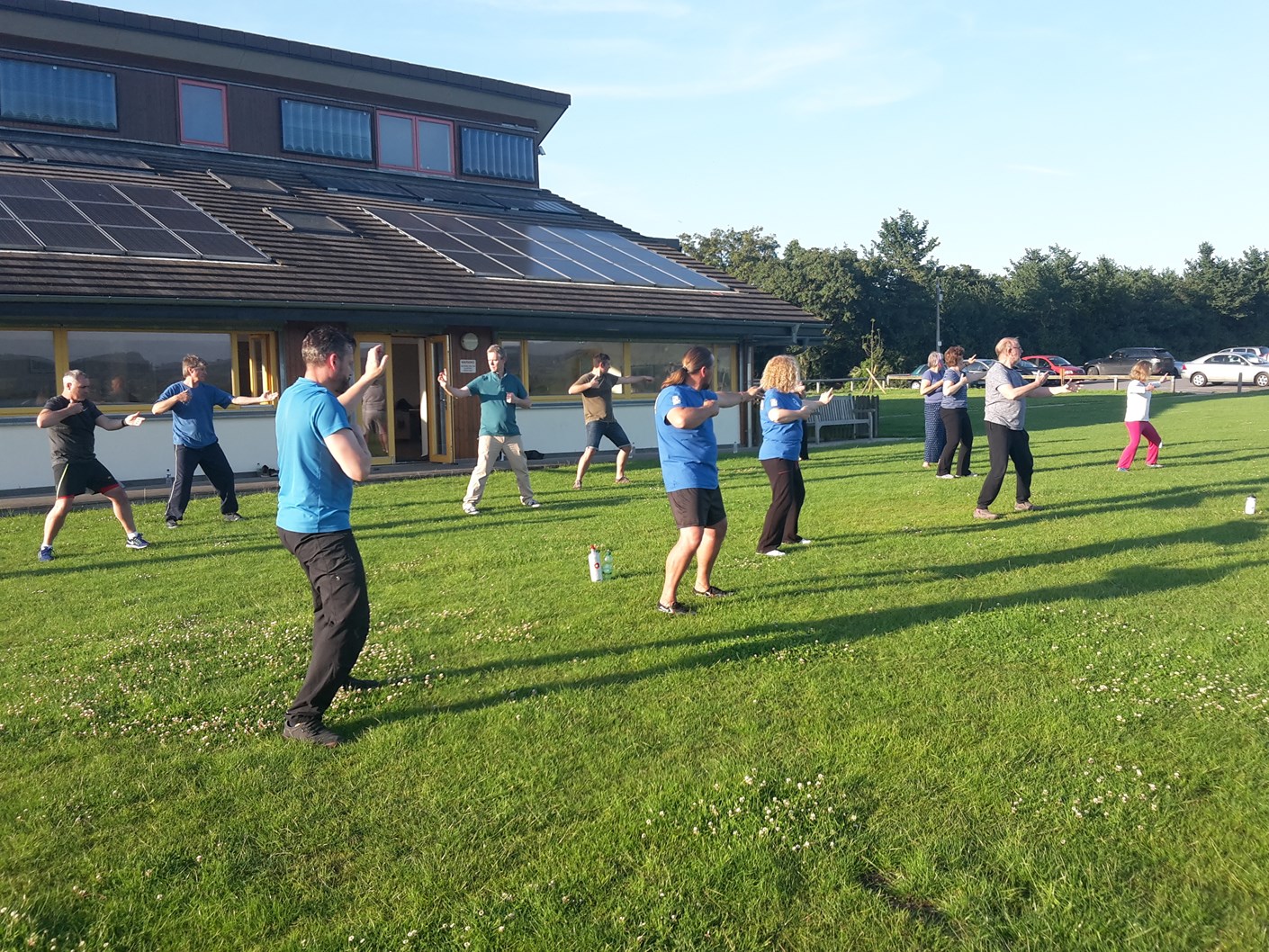So firstly Mark and Chris, can you please explain what Tai Chi and Qigong is?
Mark: “Tai Chi literally translates to ‘Supreme Ultimate’. It was originally developed as a martial art and interest has grown in its application as a low-impact exercise for health and wellbeing, as well as muscular-skeletal rehabilitation.”
Christopher: “The term Qigong refers to the practice and study of methods that stimulate and cultivate the innate energy of the human body. This can encompass physical movements, static postures and meditation.
“The main intention is to improve the health and wellbeing of the body, as well as the mind.”
And how did you both get into your respective specialisms?
Mark: “I first became interested in Tai Chi approximately 40 years ago. As I was a young engineer, it was my ‘not-work-thing.’
“I just fell in love with it as it wasn’t just a martial art, but it applied all of the bio-mechanical skills I was fascinated with as an engineer; literally a human-engineer. My fascination led me to train in Malaysia, Singapore and Taiwan, and I even competed as part of the British team both nationally and internationally.
“In around the year 2000, I was asked by an NHS hospital if I could teach their staff Tai Chi for falls prevention, as research showed that it was more effective than other balance training methods. My interest with Tai Chi as muscular-skeletal rehab grew from there.”
Christopher: “I suffered a neck injury following a car accident in 2002. In 2003, I started training in Chieh Family Yang Tai Chi as part of my injury rehabilitation. The class compromised of a mix of Tai Chi and Qigong. It was the Qigong that resonated the most for me.
“I later had a chance meeting with an old friend who had been teaching Qigong and Tai Chi, and I began training with his class. After a few years of training, my teacher certified me to teach his Ba Duan Jin system so that I could share it with my clients.
“In 2010, I completed my Qigong training and began teaching my own students. By 2018, I began to offer instructor training so I could pass on my knowledge and help to make Ba Duan Jin more accessible to everyone. “
Christopher – would you mind explaining what the Ba Duan Jin style of Qigong is?
“It’s one of the more popular forms of Qigong. It involves a set of eight movements that aim to relieve physical tension in the body and improve circulation. I can be enjoyed either as gentle or challenging practice depending on your needs.”
What role does both Tai Chi and Ba Duan Jin Qigong play in the sport and physical activity sector?
Christopher: “The practice of Qigong can help people develop a balanced approach to health and wellbeing. With the increase in symptoms associated with mental health and physical exhaustion, Qigong can build a bridge between the need for physical movement and the requirements for self-care in a more personal and self-attentive way.
“The simplicity of the eight movements makes it far easier to remember and engage with outside of the classroom, so participants are able to practice in their own time as well.”
Mark: “Tai Chi can offer a combination of physical exercise, mindfulness and development. The emphasis on body awareness, coordination and mindfulness can benefit athletes in sports such as martial arts, dance and gymnastics due to fine-tune movement mechanics.
“Participating in workshops, events or group sessions can also foster a sense of belonging and camaraderie among participants, ultimately promoting social wellbeing and support networks within the sport and physical activity sector.
“Both Tai Chi and Qigong can help to nourish joints and therefore relieve aches and pains, as it puts them through their full range of motion without stress. The slow and gentle movements make it low-impact exercise, helping to reduce the risk of injury. Tai Chi is also known for being part of rehabilitation programmes for individuals recovering from injuries or surgery, helping them to regain strength, flexibility and coordination.
“Both practices are accessible to people of all ages, fitness levels and abilities, due to their gentle and adaptable natures. They can even be adjusted for seated participants, which helps to promote recovery from illness and injury. The activities can also aid participants through increasing quality of sleep, reducing stress, anxiety and depression, whilst also promoting relaxation and mental clarity due to the practice being mindfulness-based.”
What do you enjoy about working in your area?
Christopher: “Being able to offer a solution to those who need a bit more care and attention is a very rewarding experience.
“To be a part of helping others regain their physical health and grow in confidence when illness and injury may have become overwhelming, builds a sense of human connection, service and community spirit.
“Helping people realise they can actively take part in their own recovery and daily health is a priceless gift to pass on to someone.”
Do you have any advice for those beginning their journey into Tai Chi or Qigong?
Mark: “There are so many people and organisations offering Tai Chi and Qigong, it can be hard to know where to start or how to access the quality providers. This is where the Tai Chi & Qigong Union for Great Britain and CIMSPA come in – you can see a practitioner’s experience and standards.
“Find a teacher you connect with, one who offers what you are looking for, both in the arts and personal development.”
Christopher: “Firstly, I think it would be beneficial to write down your needs and goals so you have an intention. Try to find something local if you can, being able to access a class or teacher locally will help you maintain a regular practice.
“Find a teacher who can teach you what you require to support your needs and goals. Ask them who their teacher is and if they are still training themselves.
“If you can find a teacher or group that you feel comfortable with, the training will be more enjoyable.”
How to begin your journey into tai chi and qigong
There are so many people and organisations offering tai chi and qigong it can be hard to know where to start or how to assess the quality. This is where the Tai Chi & Qigong Union for Great Britain and CIMSPA come in as both assess through quality standards and experience. Find a teacher you connect with and who offers what you are looking for both in the arts and personal development.
The National Standards for tai chi and qigong were developed in partnership between the Tai Chi & Qigong Union for Great Britain (TCUGB), the British Council for Chinese Martial Arts (BCCMA), and The Chartered Institute for Management of Sports and Physical Activity (CIMSPA).
To find out more about Tai Chi and Qigong, visit:
Chris Handbury - School of Qigong
Mark Peters - Midlands Tai Chi Rehab


